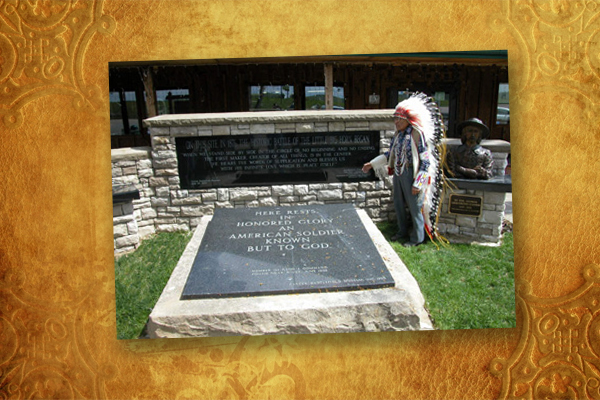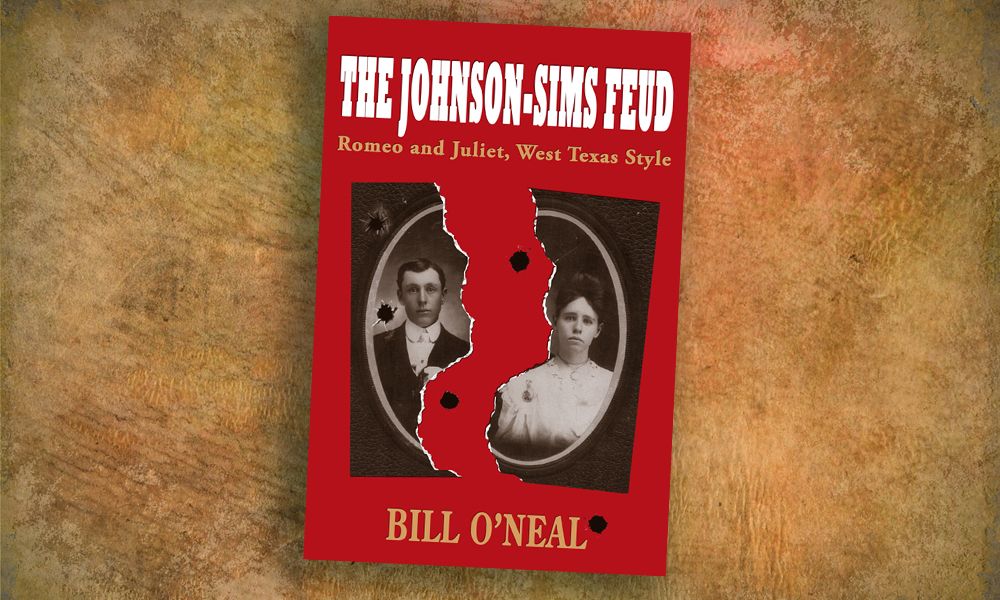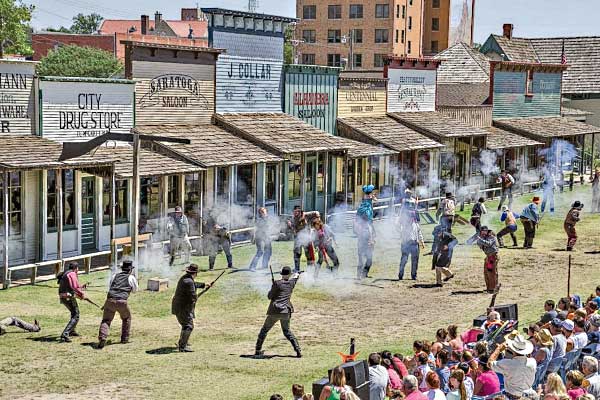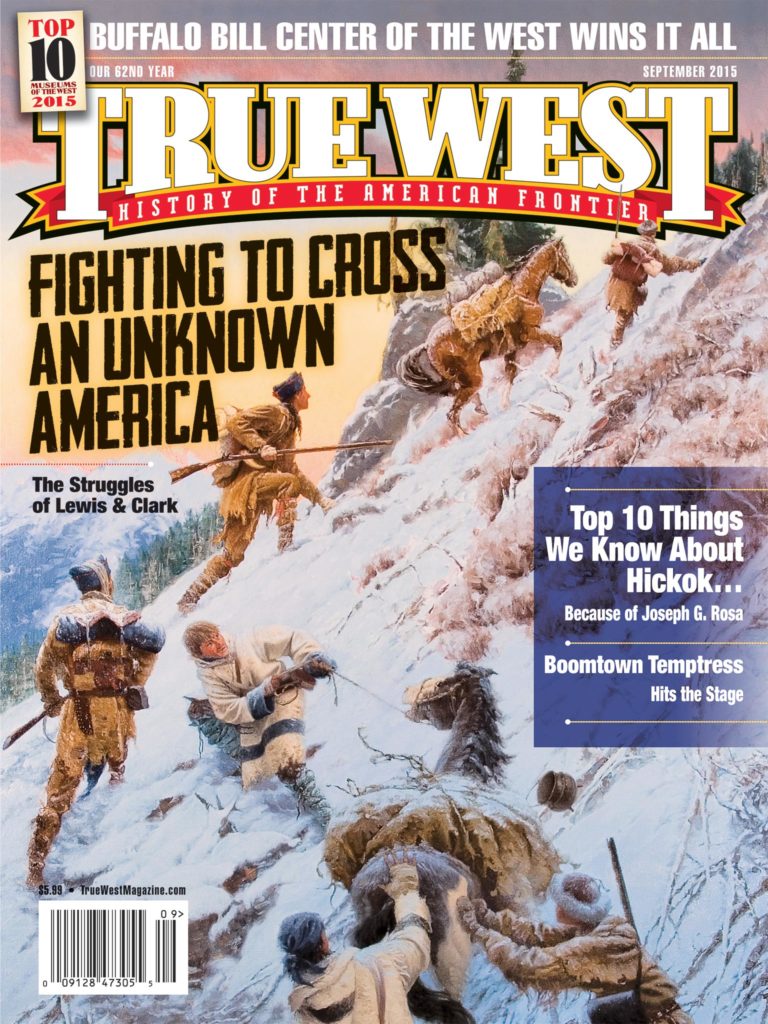 If you are on a tour of the historical sites and battlefields of the Great Sioux War of 1876 in Montana, North Dakota, South Dakota and Wyoming, all roads lead to the Little Bighorn National Battlefield Monument on the Crow Agency between Hardin, Montana, and Garryowen, Montana, off Interstate 90 and U.S. Highway 212. But, what I recommend is that before you visit the Monument and the National Cemetery, you stop at the Custer Battlefield Museum in Garryowen (named after “Garry Owen” one of Gen. George Custer’s favorite Irish marching songs). The battle started not to far from the museum on the banks of the Little Big Horn River. In addition to the excellent exhibits inside the museum, with many rare artifacts from the participants in the battle, the Tomb of the Unknown Soldier in front of the museum contains the remains of the first casualties of the battle. In 1926, fifty years after Custer’s 7th Cavalry terrible defeat, the Burial of the Hatchet Ceremony was held to dedicate the granite memorial. Fifty-thousand attended the solemn event to see Sioux Chief White Bull and U.S. Army General Edward Godfrey “bury the hatchet” and remember those who died that tragic day five decades before. Seventy-five years later, on the 125th Anniversary of the Battle of the Little Bighorn, the granite Peace Memorial was dedicated right behind the Tomb of the Unknown Soldier. For more information, including directions to the Custer Battlefield Museum in Garryowen, a national registered historic site, and the only town within the battlefield, visit the museum’s informative website at CusterMuseum.org.
If you are on a tour of the historical sites and battlefields of the Great Sioux War of 1876 in Montana, North Dakota, South Dakota and Wyoming, all roads lead to the Little Bighorn National Battlefield Monument on the Crow Agency between Hardin, Montana, and Garryowen, Montana, off Interstate 90 and U.S. Highway 212. But, what I recommend is that before you visit the Monument and the National Cemetery, you stop at the Custer Battlefield Museum in Garryowen (named after “Garry Owen” one of Gen. George Custer’s favorite Irish marching songs). The battle started not to far from the museum on the banks of the Little Big Horn River. In addition to the excellent exhibits inside the museum, with many rare artifacts from the participants in the battle, the Tomb of the Unknown Soldier in front of the museum contains the remains of the first casualties of the battle. In 1926, fifty years after Custer’s 7th Cavalry terrible defeat, the Burial of the Hatchet Ceremony was held to dedicate the granite memorial. Fifty-thousand attended the solemn event to see Sioux Chief White Bull and U.S. Army General Edward Godfrey “bury the hatchet” and remember those who died that tragic day five decades before. Seventy-five years later, on the 125th Anniversary of the Battle of the Little Bighorn, the granite Peace Memorial was dedicated right behind the Tomb of the Unknown Soldier. For more information, including directions to the Custer Battlefield Museum in Garryowen, a national registered historic site, and the only town within the battlefield, visit the museum’s informative website at CusterMuseum.org.





